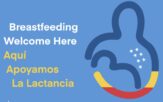
The National WIC Association released the “2023 State of WIC Report: Building the Bridge to a Healthier Future.” Supported by the W.K. Kellogg Foundation, the report centers infant feeding, economic equity, and modernization of the WIC program. It brings lessons learned in 2022 to the forefront of the conversation on reforms, innovation, and policy. This report assesses the infant formula crisis, USDA’s proposed food package rule, and WIC’s role in building a healthier future for all.
“The State of WIC: Building the Bridge to a Healthier Future” is a report that discusses the impact of the Women, Infants, and Children (WIC) program on improving maternal and child health. The report recommends policy actions for improving the WIC program, including modernizing WIC services, expanding access to program services, enhancing breastfeeding support, and increasing investment in child nutrition security. The report also addresses the need to comprehensively address the consequences of infant formula shortages and calls for reforming the approach taken by healthcare and industry to create lactation-friendly environments that support mothers on their breastfeeding journey. Additionally, the report highlights the scientific basis of USDA’s proposed food packages, boosting intake for healthier diets, and spurring industry innovation. The report emphasizes the role of WIC in strengthening infant nutrition and improving public health.
“Commercial formulas became widely available at a time when a larger share of women were entering the workforce. More than one-third of adult women were doing paid work outside of home in the aftermath of the Second World War, and the rate kept rising for several decades— with a majority of adult women employed by 1980. As household dynamics shifted, infant formula companies aggressively marketed their products with an increasing level of sophistication, pitching formula as a convenience and a sign of upward mobility and affluence for lower- and middle-class families. When white women began to turn away from formula feeding in the postwar period, infant formula became one of the few products with specialized marketing campaigns that targeted Black consumers with tailored messaging. From the beginning, infant formula companies sought to equate their product with human milk and overstate the benefits of their product. Early advertisements misleadingly suggested that formula provided greater nutrition for infants than human milk. Without the federal regulation that is common in other countries that have implemented the International Code, misleading claims can still be found on labels and packages in the U.S. market.”
“The healthcare sector must work with community partners to scale up infrastructure to support donor milk collection and processing. As human milk is the optimal source of infant nutrition, donated milk that is safely screened and processed can be used to support the nutritional needs of babies in neonatal intensive care units and, if supply is available, distributed to families who cannot breastfeed. If empowered with new statutory flexibilities, WIC Agencies are uniquely positioned to serve as donor milk drop-off sites and partner with milk banks to process donor milk. In October 2022, Congresswomen Chrissy Houlahan (D-PA), Maria Salazar (R-FL), and Stephanie Bice (R-OK) introduced the Access to Donor Milk Act, which would authorize WIC funding to support donor milk collection activities.”
Report Summary:
The report is organized into four chapters that cover the case for WIC, building nutrition security through WIC food packages, modernizing WIC services to improve public health, and spotlighting economic equity for WIC families.
The report’s introduction emphasizes the vital role that WIC plays in providing access to healthy food, nutrition education, breastfeeding support, and health screenings for low-income mothers and young children. The report then presents recommended policy actions to strengthen the WIC program and improve public health outcomes for vulnerable populations.
- Chapter 1 provides a detailed overview of the case for WIC, highlighting the program’s success in reducing hunger and bolstering nutrition for low-income mothers and children. The chapter also discusses the systemic barriers that impact infant feeding, such as racial disparities in breastfeeding, infant formula promotion, and workplace policies that fail to support working mothers.
- Chapter 2 focuses on building nutrition security through WIC food packages, which provide a monthly benefit to purchase nutritious foods that supplement the diets of WIC mothers and young children. The chapter discusses the scientific basis of the USDA’s proposed food packages and recommends increasing investment in WIC to boost intake of fruits and vegetables, seafood, and whole grains. The chapter also highlights the need for spurring industry innovation to bring healthier products to market.
- Chapter 3 discusses modernizing WIC services to improve public health outcomes, emphasizing the importance of enhancing access to program services, growing the WIC workforce, and integrating WIC into the healthcare system. The chapter also highlights the need for adapting workplace environments to support breastfeeding mothers, expanding outreach to vulnerable populations, and implementing shopping innovations to streamline the certification process.
- Chapter 4 spotlights economic equity for WIC families, emphasizing the importance of adapting workplace environments to support breastfeeding mothers and providing income and health supports such as the child tax credit and health coverage.
- The report’s appendix includes state profiles of WIC services and endnotes that provide additional context and evidence for the recommendations presented throughout the report.
Overall, “The State of WIC: Building the Bridge to a Healthier Future” presents a compelling case for investing in the WIC program to improve maternal and child health outcomes. By addressing systemic barriers to infant feeding, improving access to healthy food, modernizing WIC services, and promoting economic equity, policymakers can build a bridge to a healthier future for vulnerable populations.
The report also includes state profiles of WIC. See below to see how WIC supports families in North Carolina.
